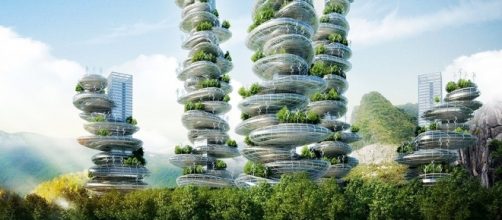The world population is approaching 8 billion people. How that many people will be fed? Agriculture has tens of components from the cultivation till it arrives on our tables; such as fertilizing, harvest, logistics and warehousing. How will this sector be able to meet the requirements of the world that will reach 10 billion in near Future?
The agricultural techniques used for thousands of years will not be sufficient to feed such a population. According to the figures of United Nations Food and Agriculture Organization, the area that can be cultivated around the world per person is approximately 0.218 hectares.
This area is expected to be around 0.181 hectares in 2050. As the industrial activities are destroying the nature, it is hard to find arable fields. All these conditions bring up the idea of “agriculture without soil” and realising farming activities in urban areas. That is how the “Vertical Farming” idea was born.
A "futuristic" project
The term was used by Gilbert Ellis Bailey in 1915. The meaning Bailey used in his “Vertical Farming” book was different from what we mean today. In 1999, microbiologist Dr. Dickson Despommier from Columbia University executed detailed works on the issue with a group of his teachers. Noticed by American media, Dr. Despommier stated that the technique would become more appealing, as the technological developments would make greenhouse cultivation cheaper whereas the traditional farming would get more and more expensive due to climate changes.
His greatest dream was getting the 50 percent of the global food production from vertical farming in 50 years. It was indeed a fantastic and a futuristic project.
Another purpose of using this new way is to decrease the usage of agricultural chemicals, like pesticides and herbicides that contaminate environment, to decrease the loss of agricultural land and protect the forest areas from converting to arable fields.
Criticism?
Disadvantages of the technique are the high land cost in city centers, high establishment and management costs. Another topic of criticism is the high energy requirement for the heating and cooling system of the facility. However, solutions are being investigated for such points.
Continuously developing and innovative technology provides cheaper and more efficient opportunities for vertical farming. As a result, although it does not yet gain sufficient attention at industrial level, maybe it will lead the way for the different systems to replace Traditional Agriculture in future. Vertical farming not only provides a new perspective for our world, but also for the space programs.


